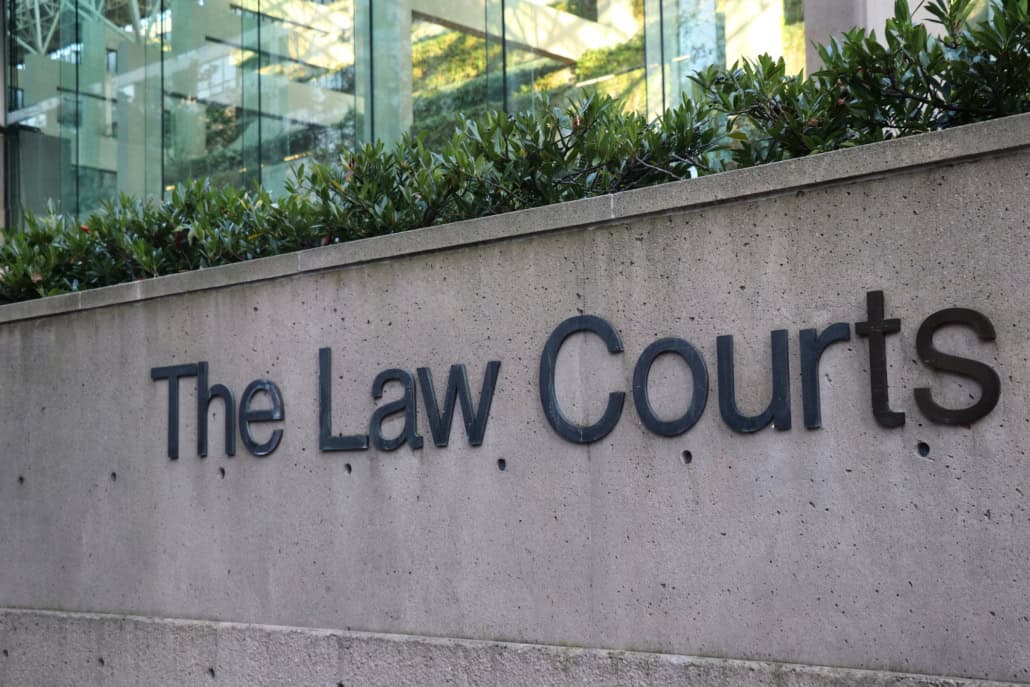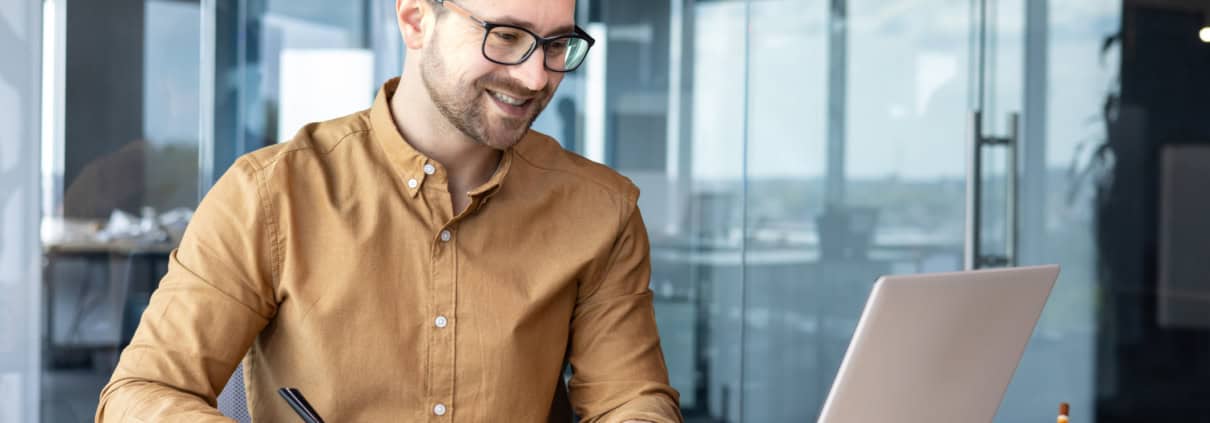July Tax News: Earning tax-free income, GST-HST quirks–and more

WOULD YOU LIKE SOME TAX-FREE INCOME?
There are several kinds of income and benefits that are not subject to tax under the Income Tax Act. To the extent you can get any of these, you won’t need to pay tax on the income, or, in many cases, even report it.
Here are some of the kinds of income that are not taxed, based on the provisions of the Income Tax Act, CRA interpretations or court decisions (available on CanLii.org)
- Bequests and other inheritances from a deceased person.
- Capital gains on your home, subject to rules that ensure that your family has only one “principal residence” at a time. However, if you build a home with an intention or secondary intention to sell, this does not apply. Even if you move in and live in the home for a while, the exemption will not be available because your gain will be business profit, not capital gain, and the principal-residence exemption applies only to capital gains. Also, you must report the gain to claim the exemption. (Income Tax Act, 40(2)(b) and 54“principal residence”)
- Compensation for damage to business operations, in some circumstances. (Federal Court of Appeal, Toronto Refiners & Smelters case (2002); Tax Court of Canada, Frank Beban Logging case (1998) and Henco case (2014))
- Compensation for mental or emotional damage at the workplace, such as harassment of an employee, or for human rights violations. (Several Tax Court of Canada cases, such as Dunphy (2009) and Abenaim (2017), and numerous CRA interpretation letters).
- Compensation to parents for the cost of transporting students to school when a school board discontinued bus service. (CRA interpretation letter, 2004).
- Damages for breach of an employment contract before it began. (Supreme Court of Canada, 1996 decision in Schwartz v. The Queen)
- Damages or compensation for personal injury, including structured settlements and awards from a provincial Criminal Injuries Compensation Board, and including Indian residential-school settlements. (Interpretation Bulletin IT-365R2, and CRA interpretation letters)
- Disaster relief payments, including from an employer (if the purpose is philanthropic, not based on employment, and the employer does not deduct the payment). (CRA interpretation letters)
- Foster care and similar in-home care that you provide in your home, provided it does not cross the line into being a “business” for you. (Income Tax Act, paragraph 81(1)(h))
- Gifts, provided they are not disguised employment income or business income.
- Grants under certain government programs, unless the program has been prescribed in the Income Tax Regulations as taxable, or it relates to your business. (Tax Court of Canada, Layton case, 1995)
- Income of a “status Indian” earned on a reserve. If you aren’t a status Indian, this exemption can’t help you! See tinyurl.com/cra-indians for details. (Indian Act, section 87)
- Lottery or other gambling winnings, unless you are so organized and active in your gambling that it constitutes a “business” from which you could deduct losses if you lost money (several court decisions).
- Strike pay from a union. (Supreme Court of Canada, 1990 decision in Fries v. The Queen).
- Tax-Free Savings Account (TFSA) gains and income. The amount you can contribute to your TFSA varies each year; for 2024, it is $7,000, plus any unused room from previous years. If you were born before 1992 and have never contributed, you can contribute $95,000 to a TFSA. You do not get a deduction, but all investment income and capital gains within the TFSA will be tax-free (provided it is not trading so actively as to be “carrying on business”).
- Television game show prizes, even where the taxpayer trained to develop expertise in the subject matter. (Tax Court of Canada, Turcotte case, 1997))
- Welfare and similar social assistance payments. These must be reported as income, but an offsetting deduction is available when calculating taxable income. (Income Tax Act, 56(1)(u) and 110(1)(f))
- Workers’ compensation benefits. These must be reported as income, but an offsetting deduction is available when calculating taxable income. (Income Tax Act, 56(1)(v) and 110(1)(f)(ii))
- Certain employment benefits (see CRA guide T4130). A few examples are:
— Your employer’s contributions to your registered pension plan, or a private health services plan.
— Your employer can give you up to $500 in non-cash gifts and awards per year, such as for a birthday or Christmas. As well, a separate non-cash “long service” or “anniversary” award of up to $500 can be non-taxable; it must be for at least five years of service and at least five years since the last such award. See tinyurl.com/gifts-cra.
— Board and lodging at, and transportation to, a “special work site” where you work temporarily, or a “remote work site” that is remote from any established community.
— Transportation to the job, if provided directly by the employer.
— Uniforms, special clothing or safety footwear that you need for your job.
Examples of how to save tax by planning for tax-free income
- Suppose you are fired from your job in circumstances where you suffer emotional trauma.
If you sue for “wrongful dismissal” and reach a settlement with your employer, the settlement will be taxable.
If instead you sue not only for “wrongful dismissal”, but also for emotional injury and/or violation of your human rights, you may be able to have at least part of the settlement classified as compensation for your personal (emotional) injuries or human rights violations.
- Suppose you have a choice of employment benefits from your employer. You can choose between the use of a company car, or a health care plan (drug and dental). The two packages cost the same to your employer, so the employer does not care which one you choose.
If you choose the company car, that is a taxable benefit. You will be required to report, as employment income on your tax return, an annual “standby charge” of 24% of the original cost of the car, or 2/3 of the leasing cost, plus an amount for operating costs if the employer pays those. (These figures will be included in your T4 and so will be included in your employment income for tax purposes.) Therefore, you will pay tax on this benefit.
If you opt for the health care plan, you will not have a taxable benefit (except for Quebec tax purposes), either when the employer pays the premiums for the plan or when you receive health care benefits such as reimbursement for drugs or dental care. Thus, you will have a lower income tax bill.
- Long-term planning: You can choose between buying a home to live in or continuing to rent a home and investing your money.
If you invest in securities (not in a TFSA), the return on your investment will normally be taxable, whether fully taxed as interest income, taxed somewhat lower as dividend income, or half-taxed as capital gains (subject to the $250,000 annual cap for individuals, in effect from June 25, 2024 onwards). The rent you pay to rent a home is not deductible (except to the extent you have a home-based business).
If you “invest” in your own home to live in and sell it for a gain in 5 or 10 years, then the capital gain will be tax-free.
Of course, it can be hard to predict whether residential home values will increase at the same rate as the return you can obtain by investing. But, of course, it’s also hard to predict what those stocks and mutual funds will do for you in 5 or 10 years!

WITHHOLDING TAX ON RENTAL PAYMENTS TO A NON-RESIDENT LANDLORD
In “Around the Courts” in our September 2023 Tax Letter, we wrote about the case 3792391 Canada Inc. v. The King, 2023 TCC 37, where a tenant had been renting a Montreal condo, and living there, since 1996. In 2010, the tenant signed a renewal 3-year lease with the condo’s owner. The lease showed a Canadian address for the condo owner, though it also showed that she signed the lease in Italy and her email address was in the “.it” domain. The tenant had his company pay the rent to the owner.
In 2018, after the company had paid $174,000 in rent from 2011-2016, the CRA assessed the company 25% non-resident withholding tax (over $43,000), plus interest and penalty, because the condo owner was not resident in Canada. The company’s appeal to the Tax Court of Canada was dismissed. Notably, it did not matter that the tenant did not know the condo owner was a non-resident.
This case attracted the attention of the media, who flagged the problem that residential tenants don’t always know such details about their landlords. In response, the Minister of National Revenue announced on Twitter (now “X”) on May 18, 2024 that this was “an extremely rare situation”, and that “the Canada Revenue Agency (CRA) does not intend to collect any portion of any non-resident landlords’ unpaid taxes from individual tenants.”
SOME GST AND HST QUIRKS YOU MIGHT NEED TO KNOW
The Goods and Services Tax (GST) and Harmonized Sales Tax (HST) form a very complex system, with myriad special rules and exceptions. Many details have changed since the GST first came into force in 1991.
Here are a baker’s dozen of unusual GST and HST rules from the Excise Tax Act (ETA) — some less well-known than others — that might affect your business. Note that while the GST and HST are administered by the CRA across Canada, they are administered in Quebec by Revenu Québec (RQ).
- Medical and other health clinics. When revenues are shared between a doctor (or other health care provider) and a clinic, it is often unclear whether the clinic is paying the doctor for health care services (exempt), or the doctor is paying the clinic for the use of the clinic’s facilities (taxable). This determination depends on both the contractual arrangements and the facts. (See CRA Policy P-238.) These arrangements need to be carefully reviewed by a GST/HST expert to ensure that the right taxes are being remitted by the right parties. Otherwise, there can be a nasty (and expensive) surprise when the CRA or RQ audits either business!
- Cosmetic-related health care services. Cosmetic surgery (e.g. facelift, teeth whitening, laser spots removal) is taxable unless it is needed for medical or reconstructive purposes. This rule actually applies to all health care services “in respect of” a cosmetic service. Thus, for example, a nursing service or dental hygienist service relating to a cosmetic treatment may be taxable, even though such services are normally exempt.
- Charges between related companies can often be free of GST by filing a special election (ETA section 156, Form RC4616) with the CRA or RQ, but only if the effect is merely to eliminate cash flow. This election cannot save tax. If one of the companies is making exempt supplies such as residential rents or health care services (so that it cannot claim full input tax credits), the companies cannot make the election. Also, if the election was made before 2015 on old Form GST25, it is now invalid and the companies are at risk of being assessed for not collecting and remitting GST/HST. Also, if two companies are both owned by the same individual, rather than under common corporate control, the election cannot be made and GST/HST must be charged between them.
- Not all health care services are exempt. Those that are not regulated by at least 5 provinces, or covered by public health insurance in at least 2 provinces, are generally not on the “exempt” list. For example, the services of massage therapists, kinesiologists and homeopaths are taxable, even if they are regulated by the province! (There is an exception for a “small supplier”, with no more than $30,000 per year of annual taxable supplies, who chooses not to register for GST/HST.)
- Services are generally taxed based on the customer’s address. Thus, in general, if a consultant in Ontario bills an Alberta client, only 5% GST applies, but if a consultant in Alberta bills an Ontario client, the Ontario 13% HST rate applies. However, there are many exceptions to this rule. One exception is for “personal” services (e.g., haircuts), which are taxed based on where they are performed … but this rule excludes a “professional” service (e.g. a lawyer or accountant), which normally follows the general rule! This rule may have surprising effects. For example, a hotel with a spa that provides massage therapy should likely be charging GST or HST based on the customer’s home province, if massage therapy is a “professional” service.
- A vendor selling real property that has GST or HST buried in the price (where the vendor wasn’t able to claim an input tax credit on purchasing the property, for any reason) can often recover that GST or HST, by way of a special input tax credit or rebate. These obscure rules, in ETA sections 193 and 257, are often overlooked by lawyers and accountants advising vendors.
- If you acquire a service or intangible property (e.g. a consulting service or downloaded software) from outside Canada, and you are not charged GST/HST, you generally have a legal obligation to self-assess and pay the GST or HST to the Canada Revenue Agency, unless the purchase is for a business that can claim full input tax credits anyway. This is called an “imported taxable supply”. The CRA does not in practice assess consumers for this, though legally it can. But if you acquire an imported taxable supply for your business, and you are not able to claim input tax credits (e.g. because your sales are exempt), the CRA or RQ may find this on auditing your business and assess you.
- If a GST-registered agent sells goods for a principal who is not required to collect tax, the agent is considered to have bought and sold the property from the principal, and must collect GST or HST on the full price charged to the customer. For example, suppose you have a used boat (which you used for your own pleasure) that you want to sell. You leave it with a boat dealer, who sells it for you and takes a commission. The dealer must collect and remit GST or HST on the full sale price (not just the commission), even though you would not have to do so if you sold the boat yourself.
- If your business collects a “deposit” from a customer, no GST or HST applies until you apply it as “consideration” for the purchase. However, based on a Tax Court case (Tendances et Concepts Inc., 2011), what you think is a “deposit” might actually be a “payment on account”, in which case the GST or HST applies as soon as you have collected it. As well, once you have invoiced an amount, the entire GST or HST on that amount is normally “payable” and must be remitted for that reporting period. These rules are tricky, and if you get them wrong, when the CRA or RQ audits your business, it will assess you for not having remitted GST or HST in the right reporting period.
- If you are selling commercial real property to a GST-registered purchaser, the purchaser normally accounts for the GST or HST and usually claims an offsetting input tax credit, so that the purchaser doesn’t actually pay any amount in tax. However, the sale is still “taxable” for GST/HST purposes. As a result, if your purchase and sale agreement says that any GST or HST is “included” in the sale price, you will only get 100/105ths, 100/113ths or 100/115ths of the sale price (depending on the province) when the deal closes. Be careful about how the agreement is worded!
- The sale of vacant land is often exempt when sold by an individual, but there are many exceptions. For example, if you have previously severed the land into more than two parts, it will be taxable. If you have been renting out the land, it may be taxable. A sale by a corporation is almost always taxable. If a farm has a farmhouse on it, the farmhouse portion (plus one-half hectare of land) is usually exempt. Again there are lots of special rules and exceptions, and you should get professional advice to make sure you’re getting it right.
- If your business sues another person for breach of contract, and the original contract bore GST or HST, any amount you receive as damages or in a settlement will normally be considered to be GST- or HST-included, so that you must remit tax out of the total and the defendant may be able to claim an input tax credit.
- An employed musician who is also GST-registered can often claim input tax credits for tax paid on buying musical instruments used in employment, under a special rule in ETA subsection 199(5).
As you can see, the GST and HST are very complex. The legislation and regulations run to thousands of pages. The above only scratches the surface of the complexity.

BUYING PROPERTY FROM A NON-RESIDENT: INCREASED WITHHOLDING
If you are buying real estate — such as a house or condominium, or a commercial property — from a non-resident of Canada, you need to know about your obligation to withhold tax unless the vendor provides you with a “section 116 certificate” from the CRA.
Non-residents generally are subject to Canadian income tax only on certain Canadian-source income. One such source is capital gains on “taxable Canadian property”, which generally includes Canadian real property, shares of corporations whose value is primarily attributable to Canadian real property, and certain other items.
Of course, a non-resident who sells Canadian property might not have any other property in Canada, and so the CRA might not be able to enforce collection of the tax that is payable. To solve this problem, section 116 of the Income Tax Act makes the purchaser potentially liable for the vendor’s capital gains tax.
If you buy taxable Canadian property from a non-resident, then you are required to withhold 25% of the purchase price and remit it to the CRA. If you do not, you can be assessed for this amount. (The 25% reflects the typical maximum tax rate of about 50% on taxable capital gains, which for many years until June 25, 2024 have been one-half of actual capital gains.)
To avoid having you withhold this 25%, the non-resident can apply to the CRA for a “section 116 certificate”, which relieves the purchaser from the withholding obligation. The non-resident must calculate the amount of tax payable on the gain, and pay that amount to the CRA, in order to get the certificate.
Normally your real estate lawyer will be very aware of this issue and will ensure that if the vendor is non-resident, a section 116 certificate is provided before your purchase price is paid over to the vendor.
Note however that this rule can also apply to the sale of a purchaser’s right under an Agreement of Purchase and Sale, which is a “right” to acquire real property and thus falls into the definition of taxable Canadian property.
For example, suppose you are looking to buy a condominium that is not yet finished but has been under construction for some time. A non-resident signed up to buy the condo from the builder three years ago when the cost was $200,000, and put down a $20,000 deposit. With increases in local real estate prices, the condo will be worth $300,000 on completion. The non-resident agrees to “sell” you her rights under the purchase agreement, with the builder’s consent, for $120,000 (i.e., the increase in the condo’s value, plus the $20,000 deposit that will stand to your credit on closing).
This sale is a sale of taxable Canadian property, and your lawyer should be advising you to withhold 25% of the $120,000, so that the CRA does not assess you for this amount. (There may be some cases where Canada’s tax treaty with the non-resident’s country of residence relieves you of this obligation, but even in such cases the relief may apply only if you notify the CRA of the purchase within 30 days after closing.) To prevent this withholding, the non-resident will need to get a section 116 certificate from the CRA.
Some lawyers are not aware of the requirement to obtain a section 116 certificate on the transfer of rights under a purchase agreement.
Note also that the 25% withholding is 50% if the property is depreciable property (such as a rental property that can depreciate in value). Also the 25% will be 35% starting January 1, 2025, based on draft legislation released on June 10, 2024, as part of capital gains starting to be 2/3 taxed instead of 1/2 taxed as of June 25, 2024.

AROUND THE COURTS
GST New Housing Rebate allowed for laneway house on top of garage
The GST/HST New Housing Rebate is available to recover part of the GST/HST paid on constructing or substantially renovating a home. The amount of the rebate varies depending on the value of the completed home; for the federal rebate, it disappears once the home’s value exceeds $450,000. However, in Ontario, even for a more expensive home, the rebate is 6 of the 8 points of the Ontario 8% portion of the HST payable on the construction costs (or on the home), up to a maximum of $24,000.
In the recent Litman case, 2024 TCC 58, Mr. Litman built a “laneway house” on top of his garage at his home in Ottawa, for his mother-in-law to live in. He claimed the New Housing Rebate. The CRA denied the rebate on the grounds that he did not meet the test of “substantial renovation”, which requires gutting and rebuilding an existing home. Mr. Litman appealed to the Tax Court of Canada.
The Court allowed the appeal and granted the rebate. The “laneway house” qualified as a separate “residential complex”, even though it was part of the same property as Mr. Litman’s home. As a result, the rebate was available.
***
This letter summarizes recent tax developments and tax planning opportunities; however, we recommend that you consult with an expert before embarking on any of the suggestions contained in this letter, which are appropriate to your own specific requirements. For assistance with your tax planning and accounting needs, contact a member of our team.


